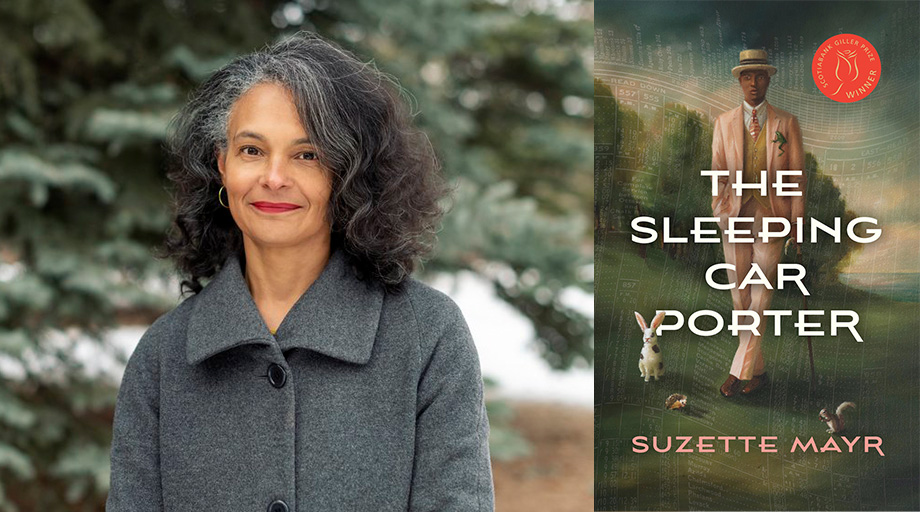This post was originally published by the University of British Columbia Library.

Dr. Suzette Mayr is the author of six novels, including her most recent book The Sleeping Car Porter, winner of the 2022 Scotiabank Giller Prize and shortlisted for many prestigious awards. She is a Professor at the University of Calgary who teaches creative writing in the Department of English, and a Killam Laureate.
Researched and written over a period of nearly 20 years, The Sleeping Car Porter follows Baxter, a queer Black sleeping car porter in 1929. On a cross-country train ride out west that gets stalled for two extra days in the Rocky Mountains, Baxter must contend with a trail full of unruly passengers, and his own sleep-deprived hallucinations and secret desires.
We spoke with Mayr about the research she did for this novel, and how the Chung Collection at UBC Library’s Open Collections helped shape its course.
Q: What was your research-to-writing process like for The Sleeping Car Porter?
For every book I’ve written, I’ve had to do research of some kind. With a book like Dr. Edith Vane and the Hares of Crawley Hall, which was my last book, I researched campus novels: who’s written what? What kinds of characters feature in campus novels? What are the conventions of the genre, and what was I going to do with that genre?
With this book, The Sleeping Car Porter, it was a much different process. Because it was historical fiction—and I had never written historical fiction before—I was really nervous about getting the details right. I also did not have a ton of confidence at the beginning.
“Throughout the research process, what I was missing was an actual timetable. What were the actual routes porters took? I was always looking for these timetables.”
When I started at the University of Calgary at my job [in 2003], I got a bit of seed funding to do research, so I went to New York and went to the Schomburg Center for Research in Black Culture. Over the years, as I became more involved in this project, I started reading history books. I found actually very little when it came to sleeping porters in Canadian terms of information about the minutiae, the very specific details of the job, like how much money is a “good” tip? How much is a “bad” tip? When the nonfiction history books talked about the job, they talked about it in very general terms.
I realized that I was making a huge mistake by restricting myself to Canadian history, because so much had been written on American porter history… so I started branching out. And as I went, I realized more and more that I needed to get into the nitty gritty. I was lucky enough to get a Social Sciences and Humanities Research Council Insight Grant [in 2013] so that I could visit physical archives.
I went to Vancouver and looked at the City of Vancouver Archives, and Ottawa at the National Library there, and in Montreal I went to Exporail. I went to Chicago. The Pullman archives in Winnipeg. In Cranbrook, there is a perfectly restored sleeping car and dining car from 1929. [The archivists there] also gave me access to a sleeping car porter uniform jacket.
For many years, it was me doing historical world-building. It wasn’t until I found, just by accident, a CBC article that talked about a VIA rail train that was stuck in the Rocky Mountains for 45 hours—that I realized that’s my story. So it was a very long and circuitous process.
Read the full interview on the UBC Library website.